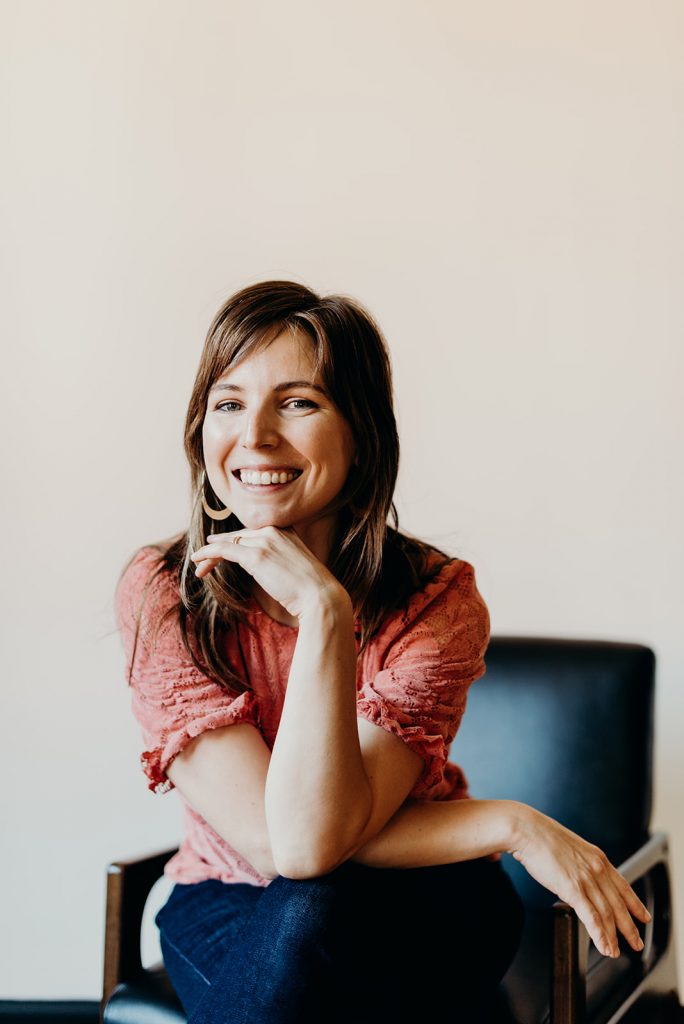Mindfulness for Anxiety: How It Works, and What to Do When It Doesn’t
“Mindfulness is about love and loving life. When you cultivate this love, it gives you clarity and compassion for life, and your actions happen in accordance with that.”
-Jon Kabat-Zinn
It’s common knowledge at this point that mindfulness can be used as an antidote to anxiety.
The simplest way to describe mindfulness is that to be mindful is to be aware of the present moment. But why does present-moment awareness reduce anxiety? And what does it mean when it does the opposite, and makes anxiety worse?
These are the questions we’re going to answer in this article.
Why would you want to practice mindfulness?
Part of the reason that mindfulness reduces anxiety is that when you feel anxious, your mind is focused on thoughts about the past, the future, and other subjects that distract you from the moment that you’re in.
Through mindfulness, you learn to shift in conscious awareness to bring you into full contact with life as you’re living it, without distraction, and, if you’re like most people*, this allows you to fall in love with life, moment by moment, even when you feel stressed and anxious.
*It’s important to note that a small percentage of people actually experience the opposite,in that the practice of mindfulness actually exacerbates symptoms of stress and anxiety. We’ll talk about what this means and what to do if this happens for you a bit further down in the article.
Not long ago, conventional western medicine viewed mindfulness as pseudoscience.
Originating in Eastern religions and philosophy, most medical doctors scoffed at the idea that mindfulness could be anything more than superstition, let alone something that could be used as medicine.
So when the neuroscientist Dr. Richard Davidson first proposed to study mindfulness and other methods of meditation in the late 1970’s, he was advised to study something more “respectable” to further his career. As a result, he focused his studies on how the brain processes emotions until the 1990’s .
But in 2004 he was finally able to publish a study comparing the brain activity of serious meditators (who meditated a minimum of 8 hour a day for at least 3 years,) to the brain activity of non-meditators. (1)
The results were so profound that the scientific community was compelled to pay attention.
Davidson and his colleague had successfully shown that regular meditation can dramatically change the structure of the brain, and these changes could have profound implications for human well-being. (2)
Of course, most of us don’t have the time or the will to sit in silent meditation for 8 hours a day, but that doesn’t mean we can’t benefit.
Mindfulness and other forms of meditation have been shown to improve anxiety, depression, mood disorders, and pain after 8 weeks-6 months of regular practice. (3) (4)
Promising results are also seen in decreasing stress and improving symptoms of stress-related conditions, like irritable bowel syndrome, post-traumatic stress disorder, and fibromyalgia; contributing to improved memory, better focus and attention; improving sleep; lowering blood pressure, and more. (5)
Related: 7 Types of Meditation for Anxiety
How mindfulness can calm anxiety
Mindfulness is a specific form of meditation practice that doesn’t require you to sit silently for any amount of time.
In fact, you can practice mindfulness anywhere you want, even when you’re going about your regular day-to-day activities.
All you have to do is focus on the present moment, without judgement or interpretation. As you notice your mind getting distracted by thought, gently let those thoughts go and bring your focus back to the moment that you’re in.
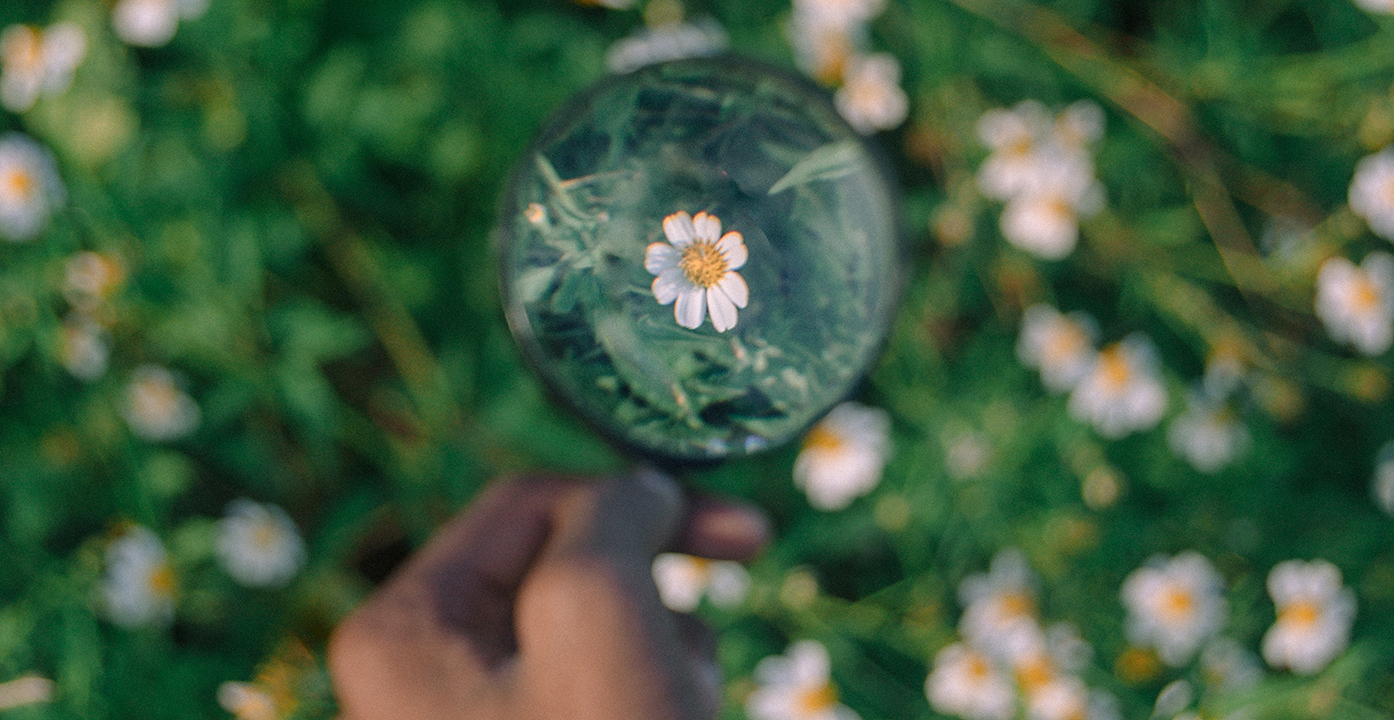
Mindfulness directly counteracts anxiety.
Anxiety is a response to stress.
When you feel anxious, your mind is responding to a stress pattern that’s active in your nervous system, and you feel this stress pattern on a visceral level.
You know the feeling. It feels like alarm bells going off in your body.
When stress patterns are activated, your sympathetic nervous system (SNS) changes your physiology so you have a better chance of surviving a physical threat.
Your heart starts thumping faster and your breath becomes fast and shallow to increase oxygenation in your body. Your blood rushes out of your organs, into your muscles, and your muscles become tense so you can run or fight if you have to.
Every part of your physical body is primed to escape.
Meanwhile, your brain’s amygdala (which is in charge of fear and survival) is activated, and your medial prefrontal cortex (which is in charge of executive function and reasoning) is shut down, so you lose your ability to see the moment clearly and find yourself operating on auto-pilot.
Your mind kicks in with frantic thoughts on how to get out of this stressful situation, but the problem is that the stressful situation you’re in when you feel anxious is itself mind-made. If it were a problem you could solve right away, you would take action and you wouldn’t feel anxious.
Anxiety takes you out of the present moment and into an imagined reality, but with mindfulness, you guide your awareness back to the moment that you’re in.
When you learn to stay present and observe the sensations in your body, without interpretation, without judging them as bad or trying to run away from what you’re feeling, you teach your nervous system to feel safe again so anxiety no longer overwhelms you.
And by changing the way you respond to feelings of stress—by observing instead of reacting—you allow your SNS to turn down so its counterpart, your parasympathetic nervous system (PNS), is able to bring your physiology back to homeostasis.
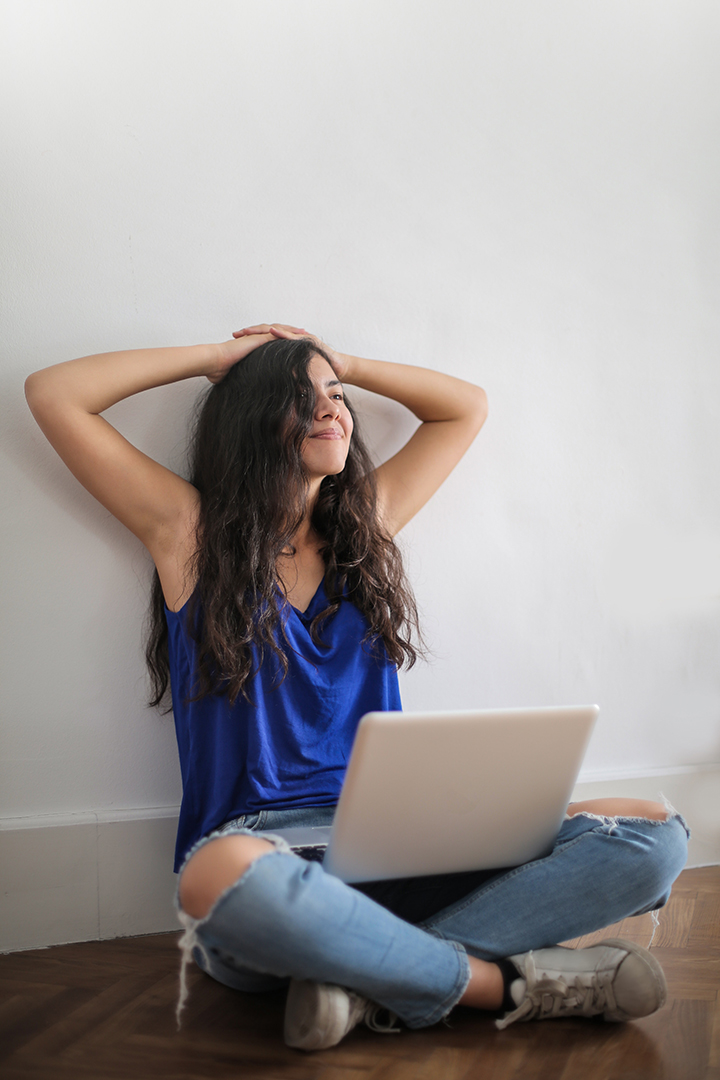
This doesn’t mean you’ll never feel stressed or anxious ever again.
Stress is a natural and important physiological reaction that’s important for survival.
What mindfulness does is that it helps you change your relationship to stress.
Through mindfulness, you can begin to recognize that thoughts, emotions, and physical sensations are not you, they’re just phenomena that pass through your awareness.
With this realization, you are then empowered to become curious about your experiences instead of taking them so personally, and this mitigates your sense of overwhelm.
For many people, and especially when practiced over an extended period of time, mindful awareness serves to reduce the occurrence of suffering, including anxiety.
When you learn to be present with what’s happening in the moment, both the way you feel in your body and also as an observer of the events unfolding around you, you no longer go into a panic about what may or may not happen in the future (as you do when feeling anxious).
Counterintuitively, it’s when you allow anxiety to be present in you that it loses its grip on you.
Anxiety is a judgement that something is terribly wrong, but when you let go of that judgement and stop fighting against reality, that’s where peace is found.
“Letting go gives us freedom, and freedom is the only condition for happiness. If, in our heart, we still cling to anything – anger, anxiety, or possessions – we cannot be free.”
-Thich Nhat Hanh
How to Start Practicing Mindfulness to Reduce Anxiety
There are many ways to practice mindfulness, but at its core it’s really very simple: Bring your attention fully into the present moment. That’s it.
The struggle that we often come up against is that our minds are too distracted by thoughts about the past and future to really embrace the present moment. So to practice mindfulness, you have to learn to let go of your thoughts and continually steer your attention back to what’s happening now.
Here are a couple of strategies you can play with:
Breath Focus
One of the first strategies most people learn when they start to practice mindfulness or other forms of meditation is to focus on the breath, and you can try it right now.

Without changing anything, just notice what your breath is doing right now. How does the inhale feel? What about the exhale? Is one easier than the other?
Notice the moment of pause at the top of the breath, and at the bottom. Notice how your breath changes after a few cycles.
You can also be more specific by focusing on the tip of your nose as you breathe, or the movement of your bellybutton.
As thoughts come in, notice them, and then bring your focus back to your breath, breathing in, and breathing out.
Coming to Your Senses
Another strategy you can try is to focus on your senses. This is a great way to practice when you’re doing the dishes, drinking a cup of coffee, or doing any other daily activity.
As you go about your business, notice what the light is doing around you, and what colors you see.
Notice the sounds you hear and the smells you smell. Notice the weight and texture of whatever’s being held by your hand. And if you’re eating or drinking something, notice the flavors.
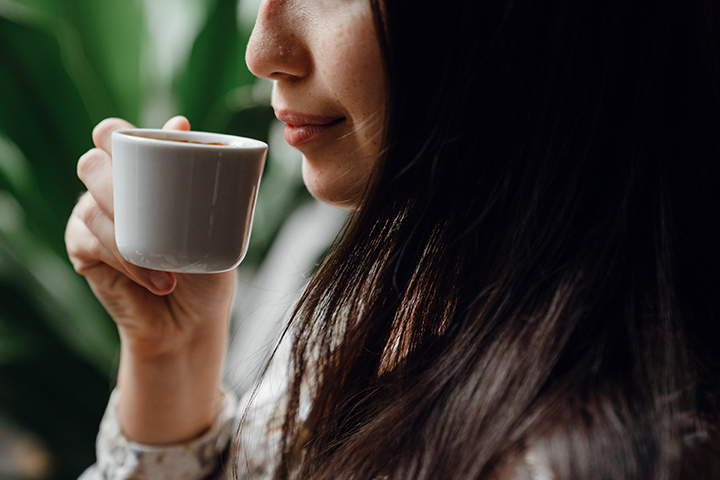
These are just two basic strategies to start with, but there are many more.
If these don’t feel good to you, you may just need to try a few more before you find the right practice for you.
How to Make Mindfulness a Habit
The more you practice mindfulness, the easier it becomes for you to drop into a state of present awareness, even spontaneously.
But the issue isn’t so much that mindfulness is difficult. The bigger challenge is that most people don’t remember to do it regularly enough for it to really make a lasting impact on their nervous system.
Regular practice is needed for mindfulness to make the shifts in your nervous system that will help you calm anxiety.
“Mindfulness isn’t difficult, we just need to remember to do it.”
-Sharon Salzburg
In order to make mindfulness a habit, it’s helpful to have a bit of training and structure.
This is especially true in the beginning, but you can never be too advanced to revisit the basics, because there is something new to discover every time you come back to your practice.
“To be fully alive, fully human, and completely awake is to be continually thrown out of the nest. To live fully is to be always in no-man’s-land. To experience each moment as completely new and fresh.”
-Pema Chödrön
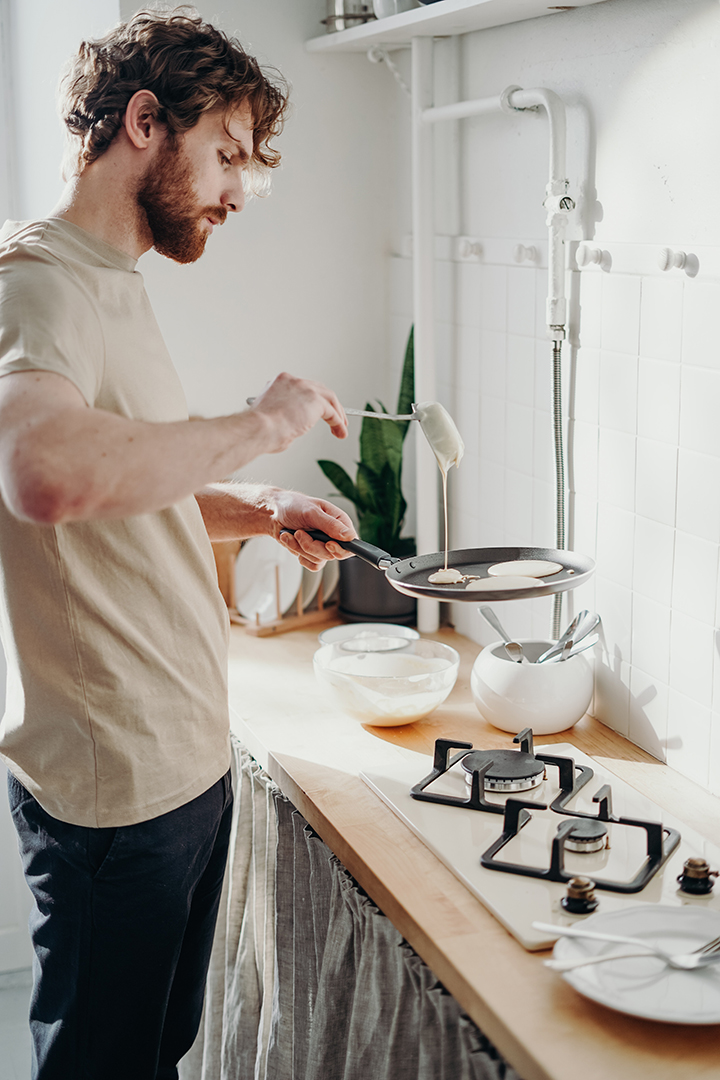
It’s helpful to set aside a time when you intentionally practice.
Maybe it’s while you’re cooking dinner, eating breakfast, or just washing your hands. Maybe you set an alarm a few times a day to remind you to take 5 mindful breaths.
If you’d like more guidance to make mindfulness a more integral part of your everyday life, check out my 14-Day Embodied Mindfulness Course.
This course will give you the framework, motivation, and guidance you need to incorporate mindfulness into your everyday life.
What if Mindfulness Makes You More Anxious, Not Less?
Mindfulness is supposed to be relaxing, so why does it make some people more anxious?
This actually happens to about 1 in 4 people at some point in their healing journey (6), and it used to happen to me, especially when I focused on my breath. Instead of feeling calm, I felt like I was suffocating, and the tight sensation in my throat and chest could quickly send me into a panic.
If practices like breath focus or body-awareness seem to trigger your anxiety, stop for now.
That’s a sign that there are some unresolved stress-patterns and/or trauma stored in your nervous system, and you need to release those first before you can feel safe enough to tune into the sensations in your body.
If this is the case for you, try focusing on things you notice outside of yourself instead.
For example, you can look around the room and take note of all the places in which you see the color blue. You might also play with aromatherapy, or other similar strategies.
In healing, different strategies work for different people at different times in their lives, and sometimes it takes a bit of informed experimentation to find the strategies that will work for you.
Mindfulness is just one of many tools you can use to heal anxiety.

My longer online course, Healing Through Anxiety, combines the wisdom of holistic healing traditions—like Chinese medicine, Ayurveda, and ancient Greek medicine—with modern scientific research in psychology, neurology, physiology, and nutrition to help you heal the root causes of stress and anxiety.
Over the course of 12 weeks, we explore numerous healing modalities—from holistic nutrition to daily mind-body practices and more—so you can find the strategies that work best for you.
Click here to learn more about Healing Through Anxiety.
I can’t wait to see where this takes you!
References:
- https://www.ncbi.nlm.nih.gov/pmc/articles/PMC2944261/
- https://hiddenbrain.org/podcast/seeking-serenity-part-2/
- https://pubmed.ncbi.nlm.nih.gov/24395196/
- https://www.ncbi.nlm.nih.gov/pmc/articles/PMC2848393/
- https://health.ucdavis.edu/blog/cultivating-health/10-health-benefits-of-meditation-and-how-to-focus-on-mindfulness-and-compassion/2022/12
- https://journals.plos.org/plosone/article?id=10.1371/journal.pone.0216643





